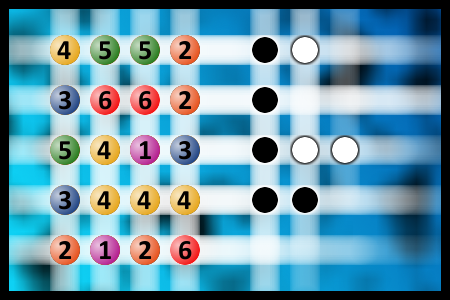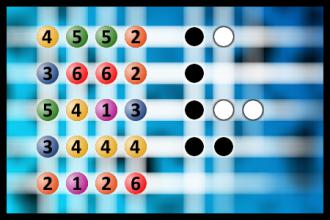Which is a winning combination of digits?
The computer chose a secret code (sequence of 4 digits from 1 to 6). Your goal is to find that code. Black circles indicate the number of hits on the right spot. White circles indicate the number of hits on the wrong spot.Correct answers: 76
The first user who solved this task is Sanja Šabović.
#brainteasers #mastermind

A pastor's wife was expecting...
A pastor's wife was expecting a baby, so he stood before the congregation and asked for a raise. After much discussion, they passed a rule that whenever the preacher's family expanded, so would his paycheck.
After 6 children, this started to get expensive and the congregation decided to hold another meeting to discuss the preacher's expanding salary. A great deal of yelling and inner bickering ensued, as to how much the clergyman's additional children were costing the church, and how much more it could potentially cost.
After listening to them for about an hour, the pastor rose from his chair and spoke, 'Children are a gift from God, and we will take as many gifts as He gives us'.
Silence fell on the congregation.
In the back pew, a little old lady struggled to stand, and finally said in her frail voice, 'Rain is also a gift from God, but when we get too much of it, we wear rubbers.'
The entire congregation said, 'Amen.'
After 6 children, this started to get expensive and the congregation decided to hold another meeting to discuss the preacher's expanding salary. A great deal of yelling and inner bickering ensued, as to how much the clergyman's additional children were costing the church, and how much more it could potentially cost.
After listening to them for about an hour, the pastor rose from his chair and spoke, 'Children are a gift from God, and we will take as many gifts as He gives us'.
Silence fell on the congregation.
In the back pew, a little old lady struggled to stand, and finally said in her frail voice, 'Rain is also a gift from God, but when we get too much of it, we wear rubbers.'
The entire congregation said, 'Amen.'

